Abstract
Treatment of subperiodic bancroftian filariasis, which is endemic in Samoa, with diethylcarbamazine citrate (DEC-C) in single doses of 4 mg/kg, 6 mg/kg, and 8 mg/kg body weight was evaluated using the nuclepore filtration method (with 1 ml blood) and compared in terms of efficacy against the microfilariae (mf) and side-reactions produced. The 6 mg/kg single-dose treatment assessed at six months showed that the effect of DEC-C to eliminate microfilariae was closely associated with the pre-treatment microfilarial level. The treatment cured nearly 60% of the low-density carriers with ≤20 mf/ml but only about 10% of the carriers with ≥501 mf/ml. However, the percentage decrease in the microfilarial count, which averaged 89.3%, did not seem to differ greatly according to the level of the pre-treatment count. The age group 20-29 years showed a poorer response to the treatment compared with the other age groups. When the different dosage regimens (4 mg/kg, 6 mg/kg and 8 mg/kg) were compared at 6 and 12 months after treatment, the 6 mg/kg regimen was found to be more effective than the 4 mg/kg regimen in reducing the microfilarial count, and it produced fewer adverse reactions than the 8 mg/kg regimen. The comparison between the annual single-dose treatment at 6 mg/kg and the six-monthly two doses/year treatment at the same dosage (total 12 mg/kg/year) showed that the latter had little advantage over the former, thus indicating the effectiveness of the single-dose treatment for longer than six months.
Full text
PDF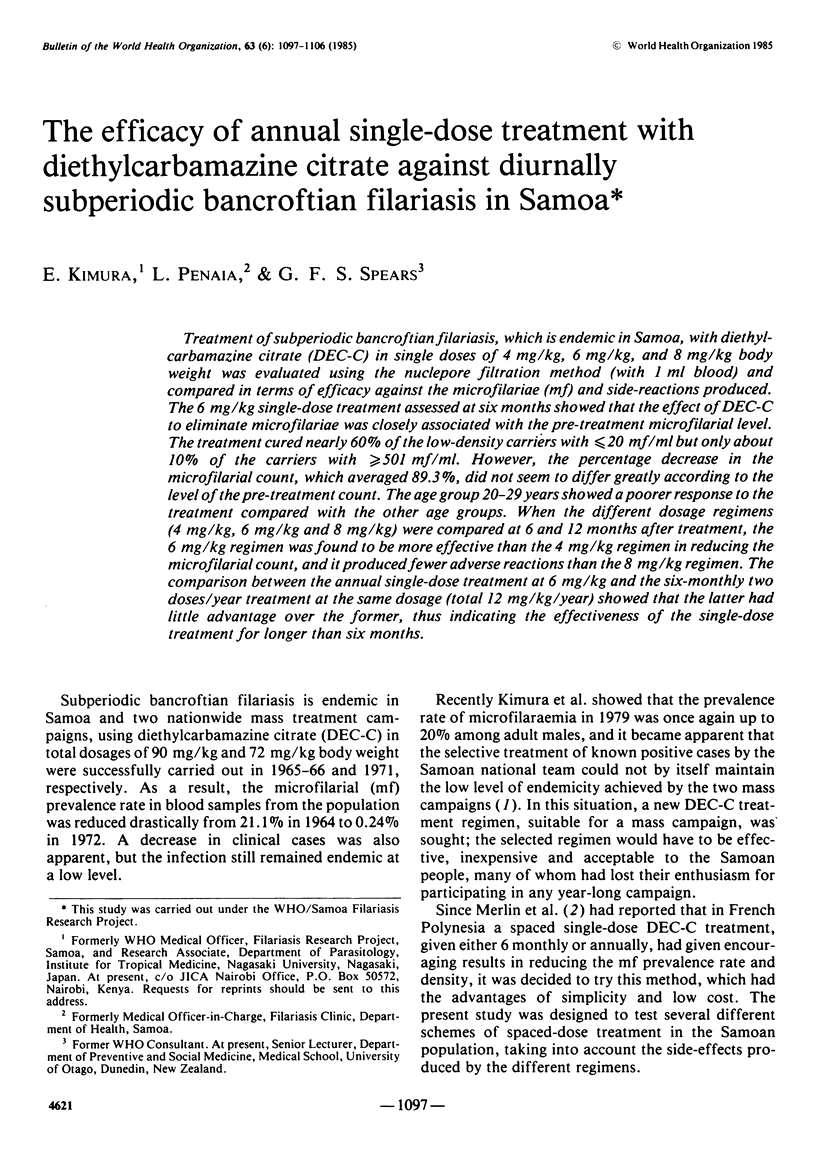

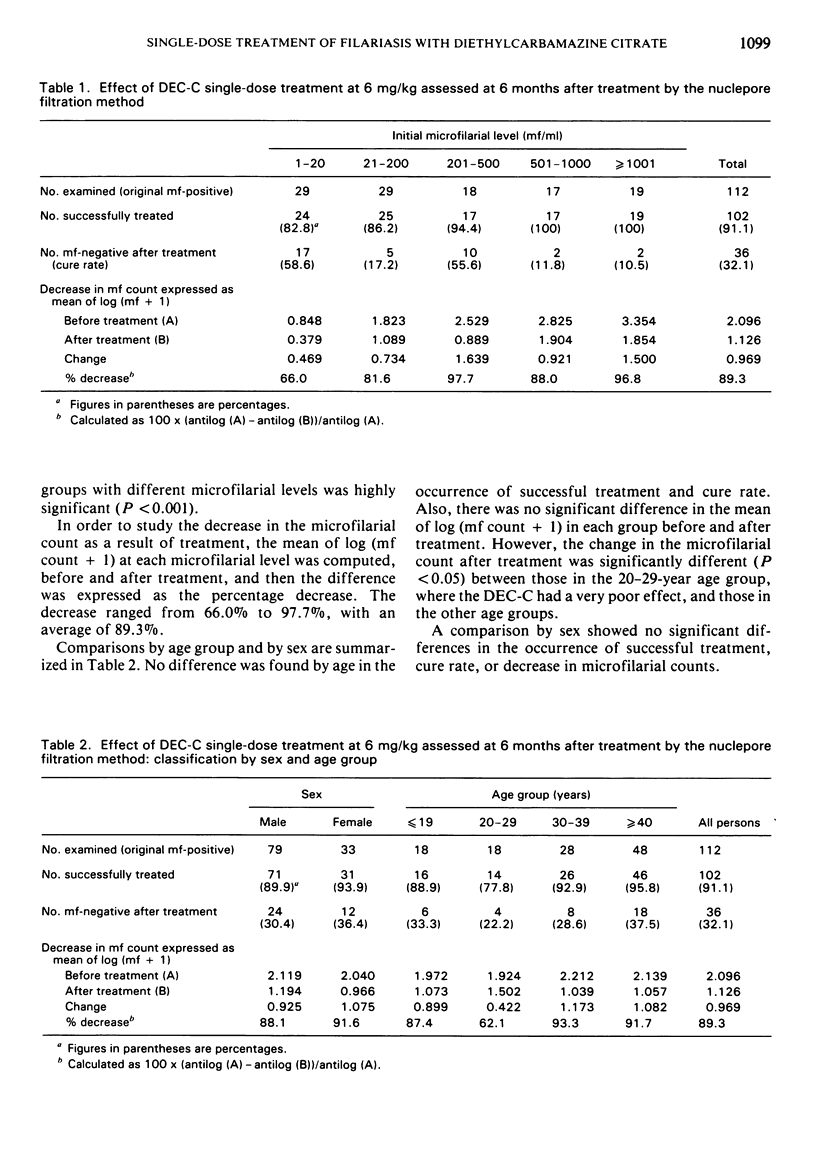
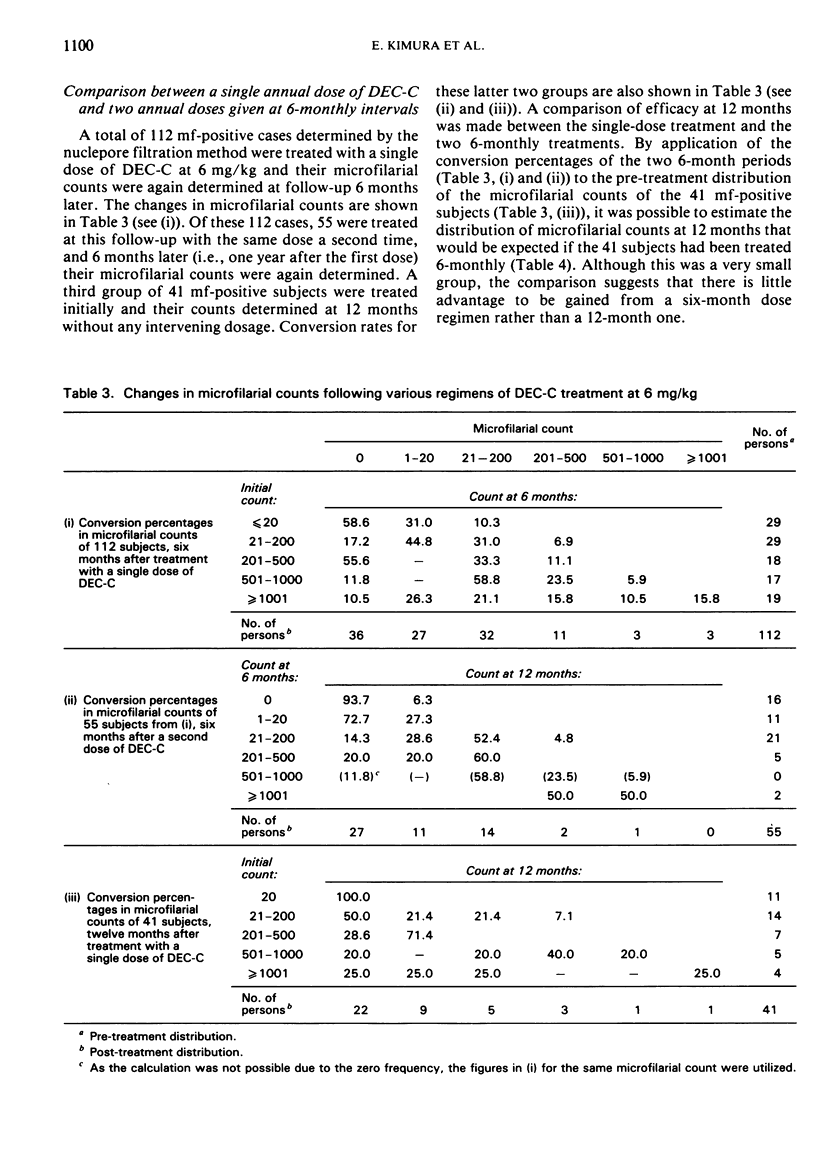
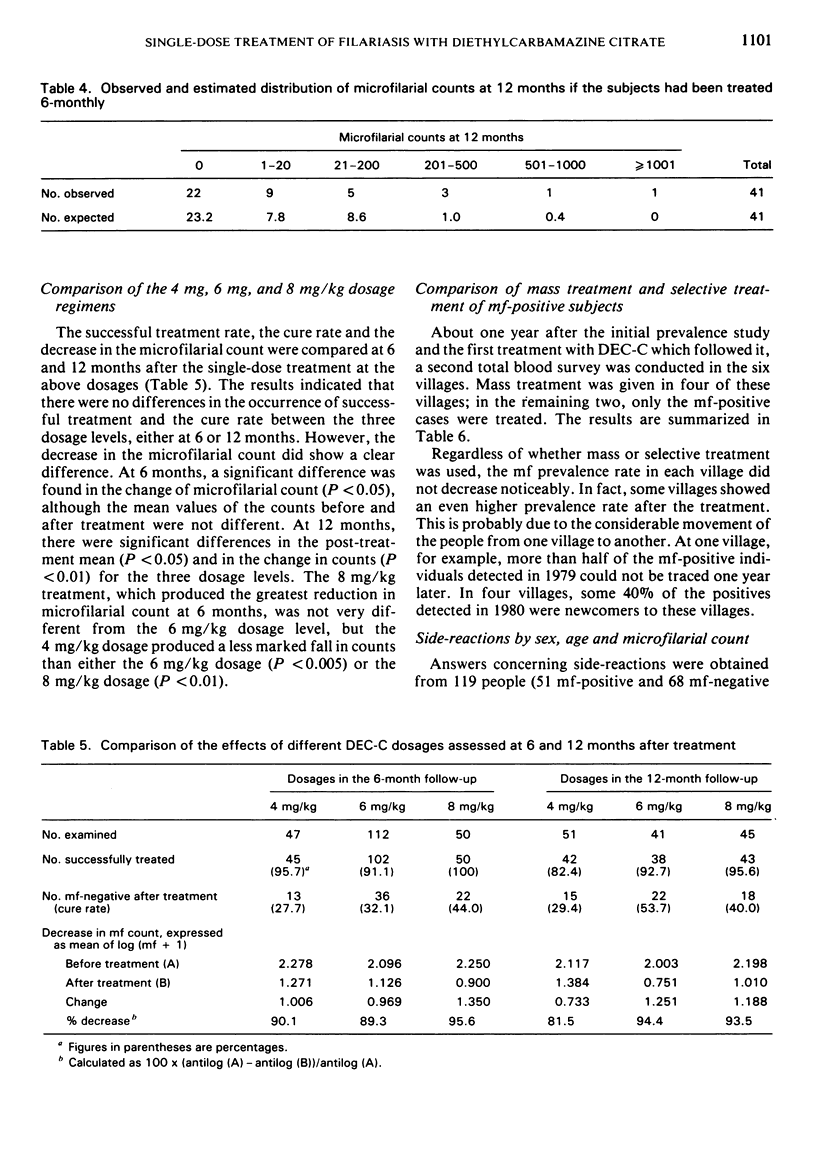
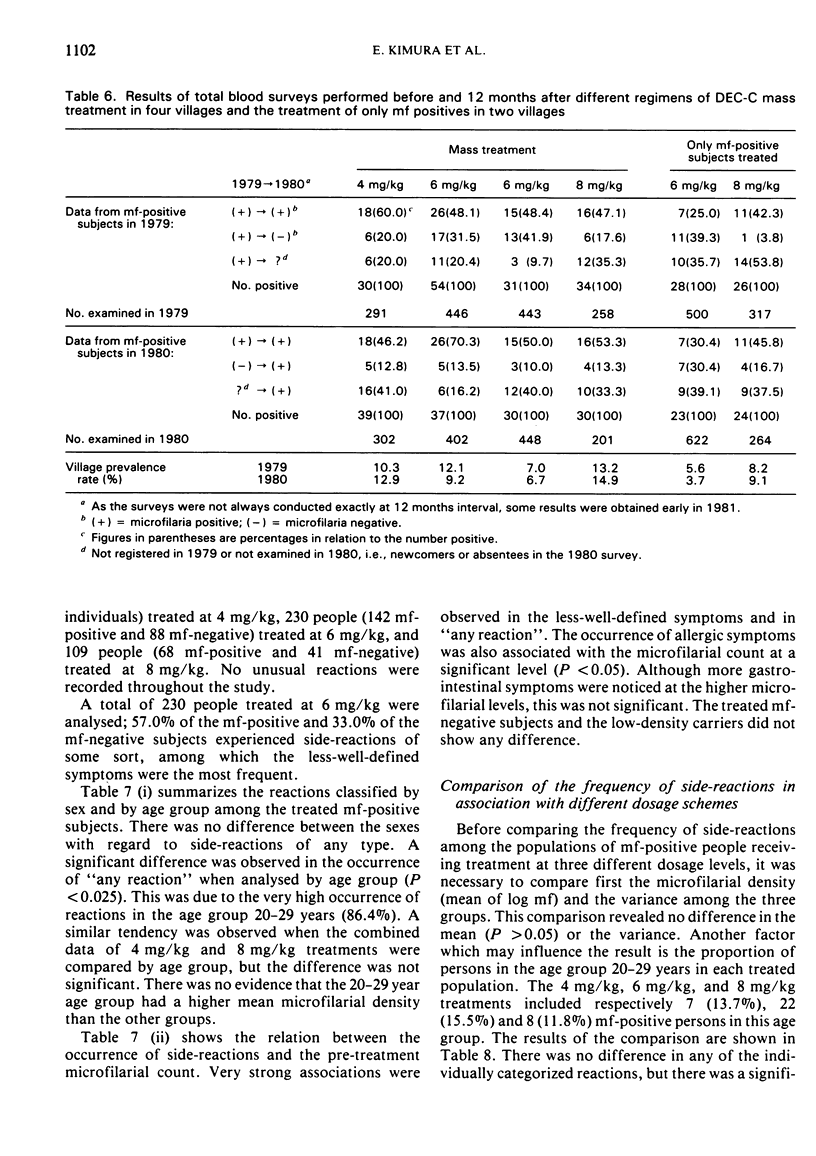
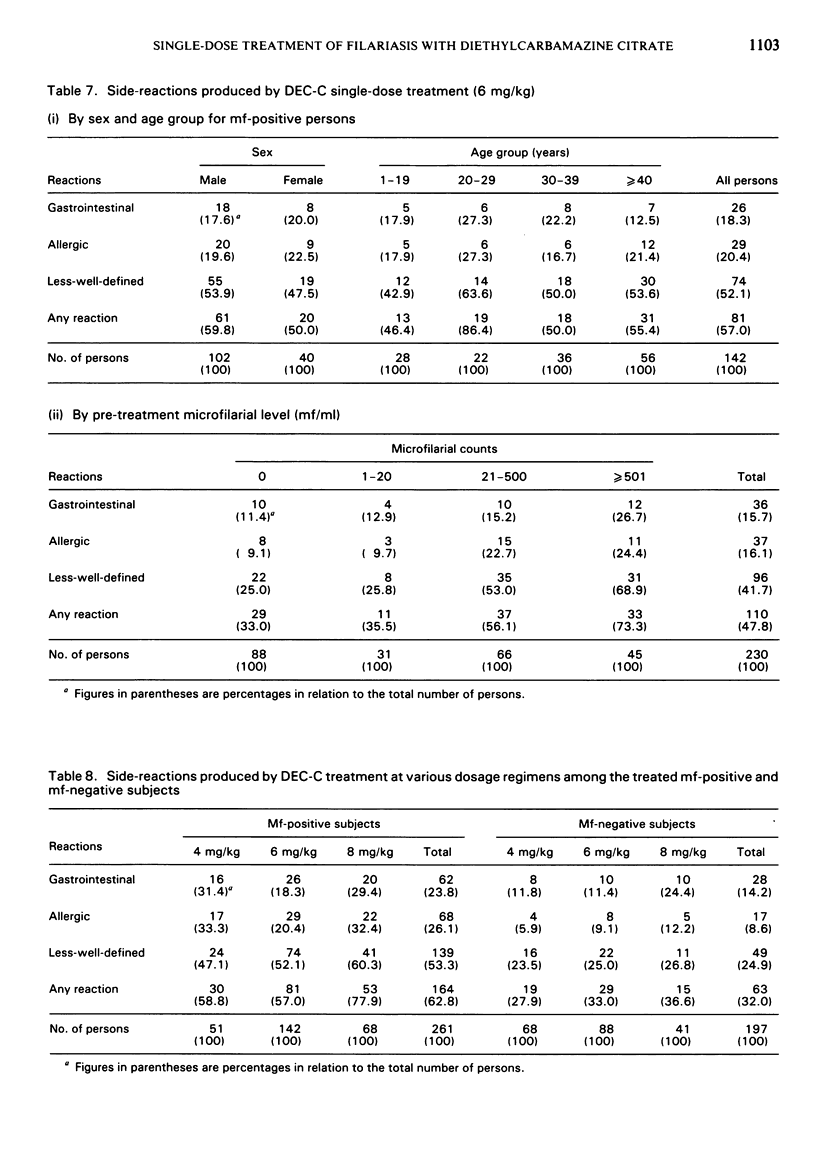
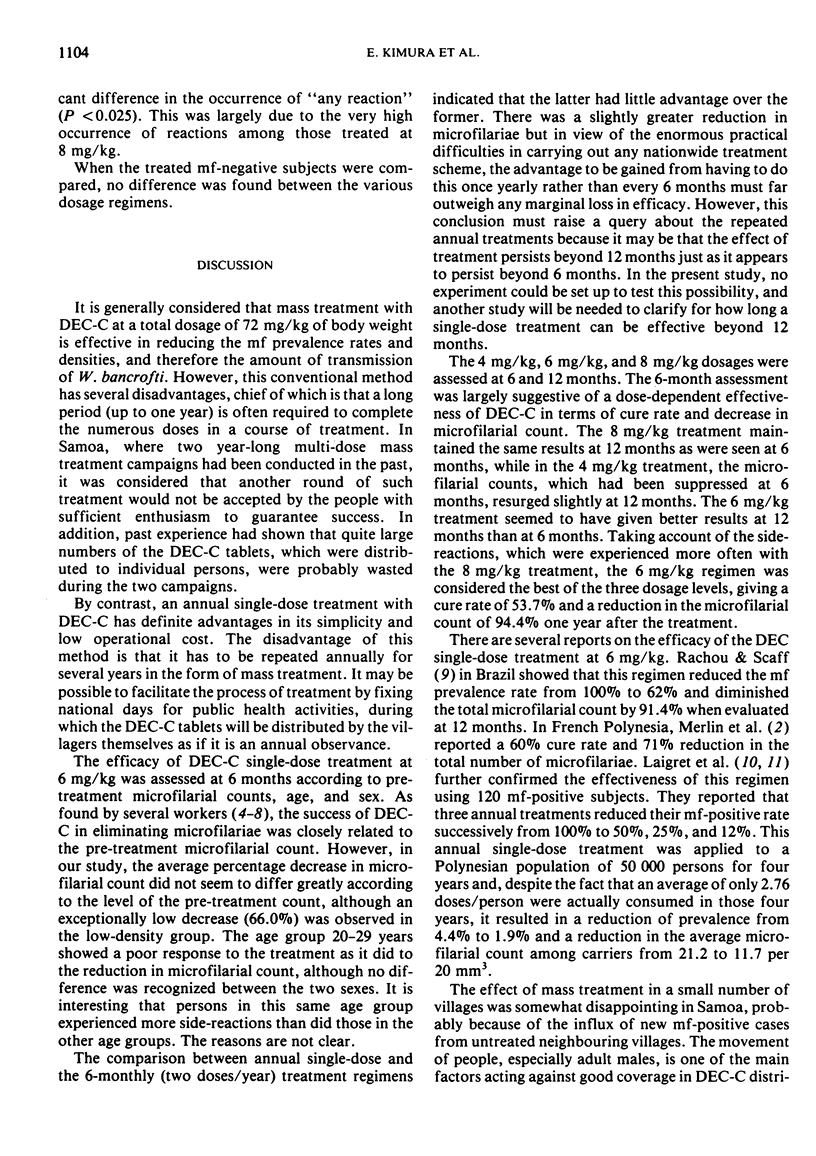
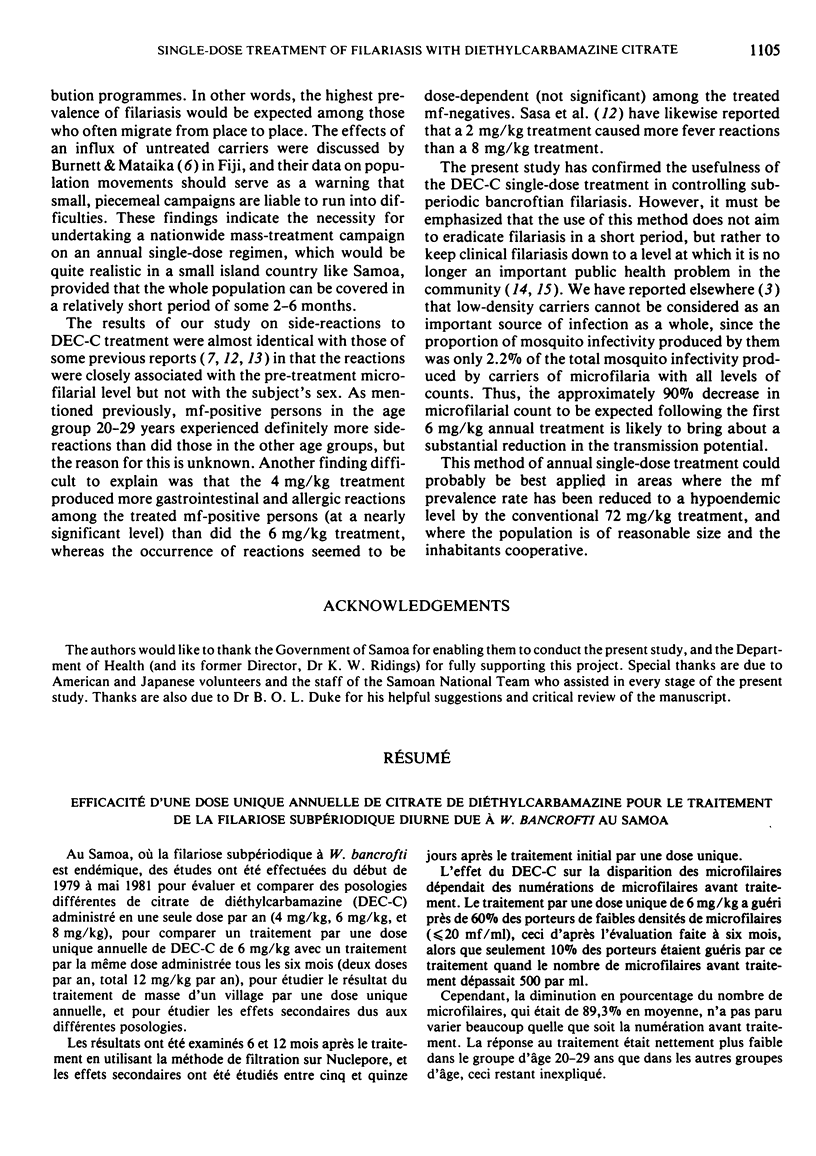
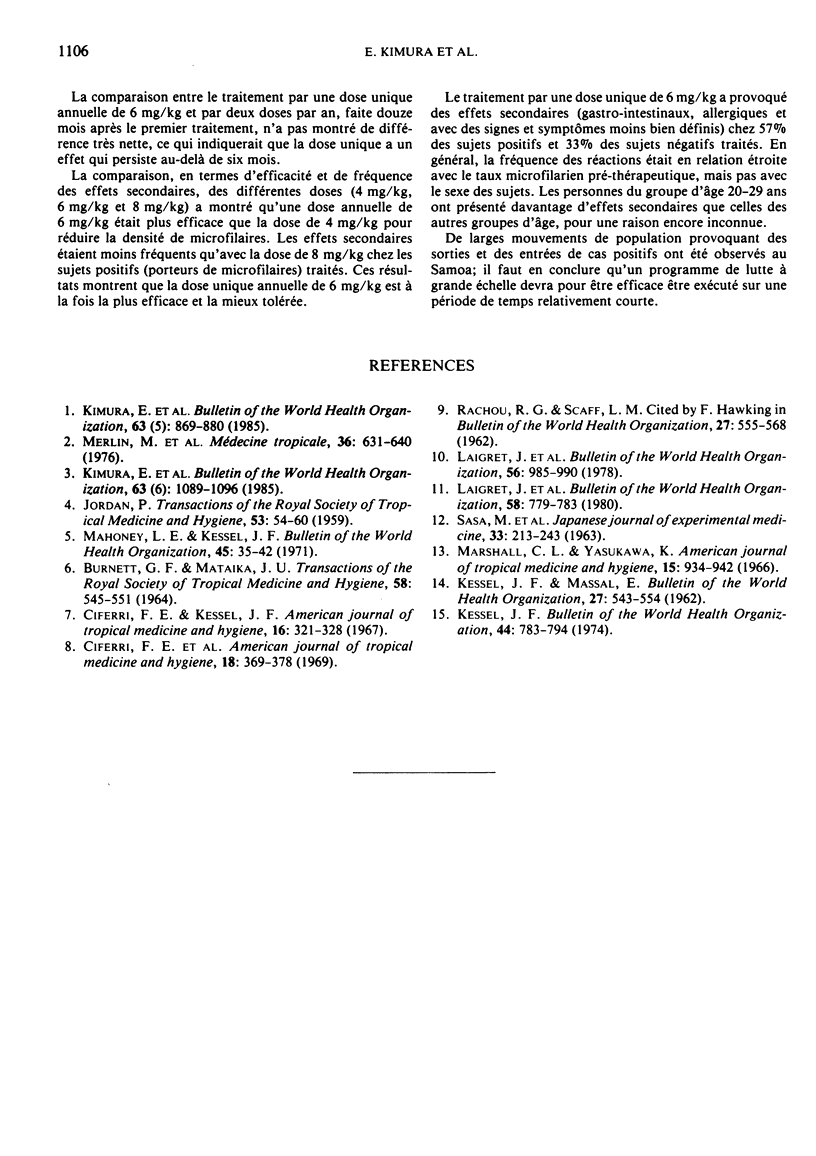
Selected References
These references are in PubMed. This may not be the complete list of references from this article.
- Ciferri F. E., Kessel J. F. Relation of age, sex, and microfilaria density to treatment of sub-periodic filariasis with diethylcarbamazine. Am J Trop Med Hyg. 1967 May;16(3):321–328. doi: 10.4269/ajtmh.1967.16.321. [DOI] [PubMed] [Google Scholar]
- Ciferri F., Siliga N., Long G., Kessel J. F. A filariasis-control program in American Samoa. Am J Trop Med Hyg. 1969 May;18(3):369–378. doi: 10.4269/ajtmh.1969.18.369. [DOI] [PubMed] [Google Scholar]
- KESSEL J. F., MASSAL E. Control of bancroftian filariasis in the Pacific. Bull World Health Organ. 1962;27:543–554. [PMC free article] [PubMed] [Google Scholar]
- Mahoney L. E., Kessel J. F. Treatment failure in filariasis mass treatment programmes. Bull World Health Organ. 1971;45(1):35–42. [PMC free article] [PubMed] [Google Scholar]
- Marshall C. L., Yasukawa K. Control of bancroftian filariasis in the Ryukyu Islands: preliminary results of mass administration of diethylcarbamazine. Am J Trop Med Hyg. 1966 Nov;15(6):934–942. doi: 10.4269/ajtmh.1966.15.934. [DOI] [PubMed] [Google Scholar]


